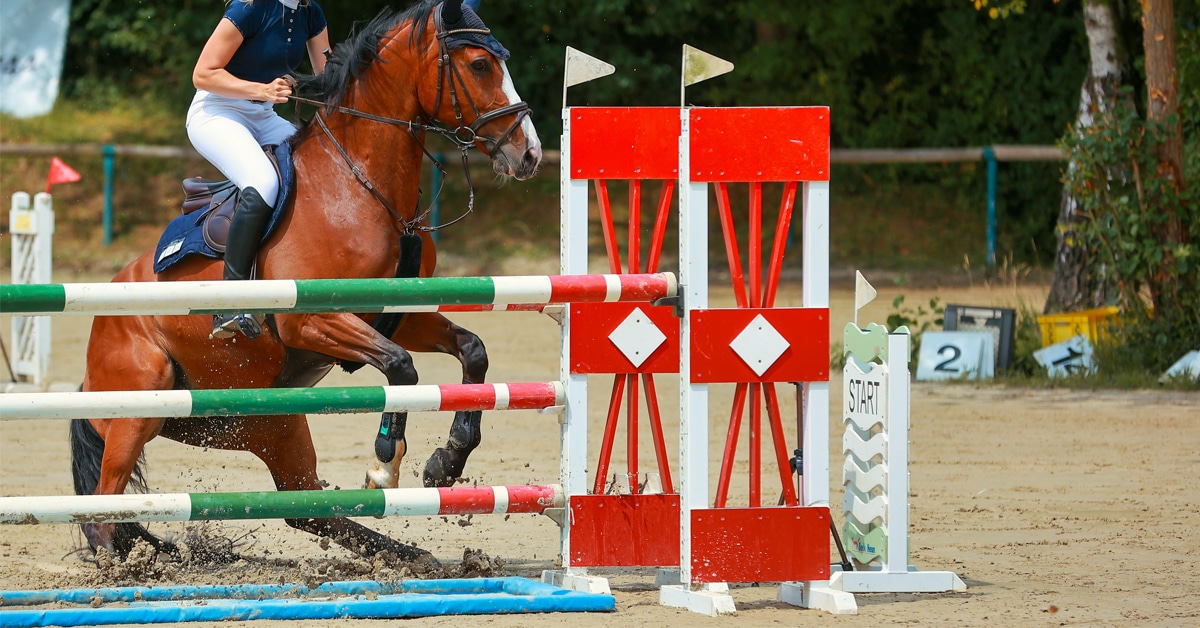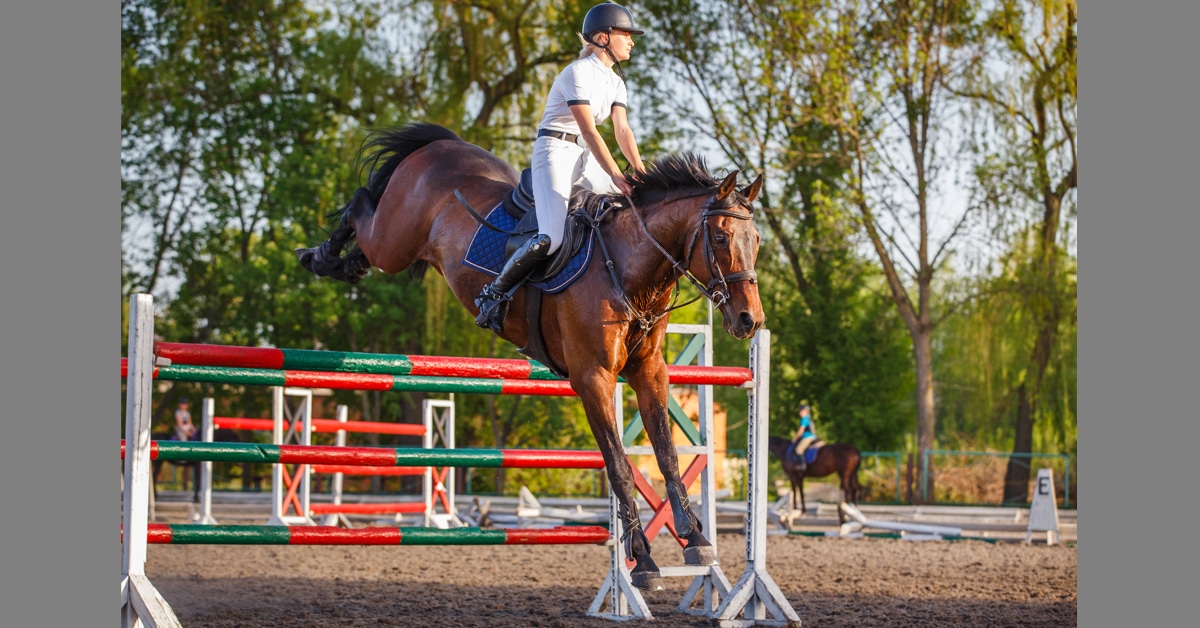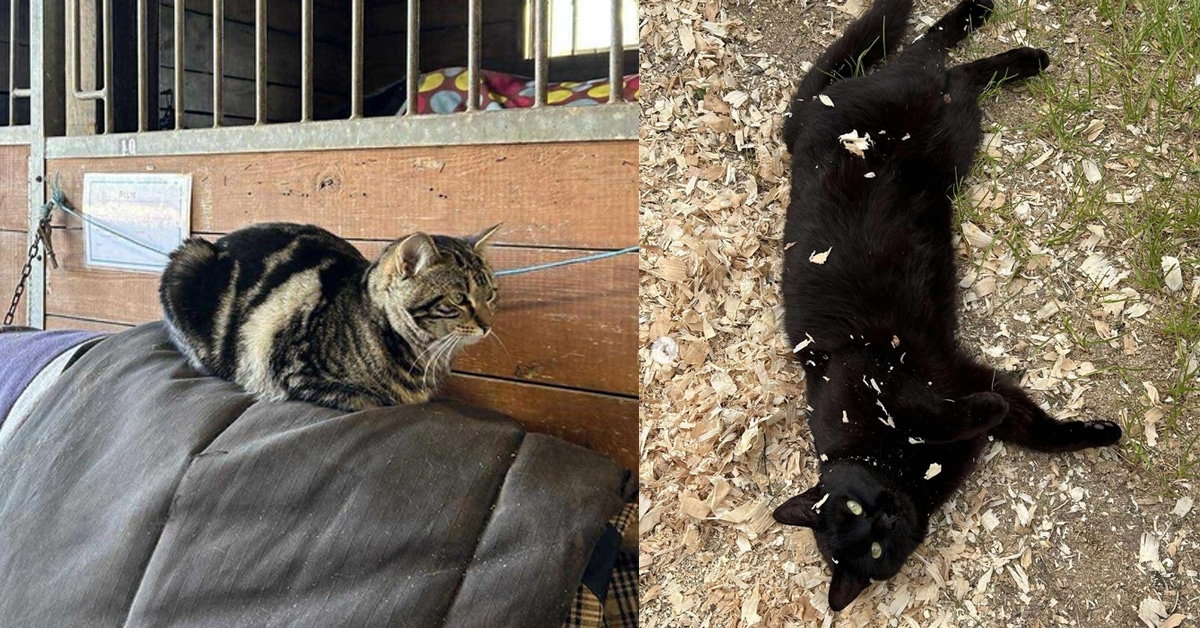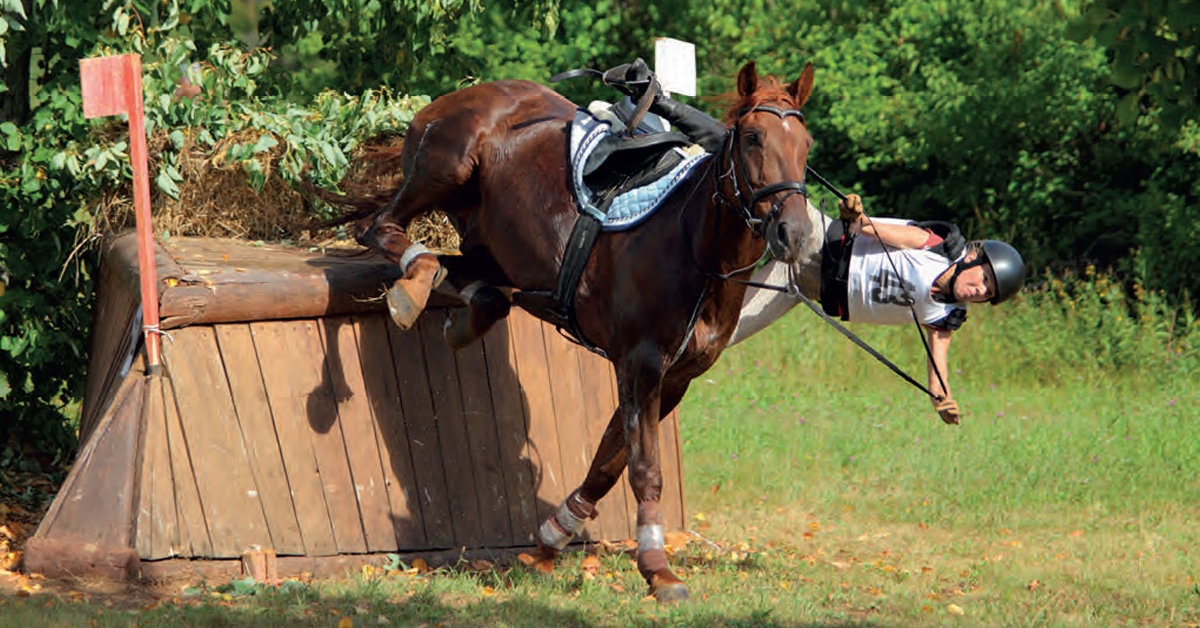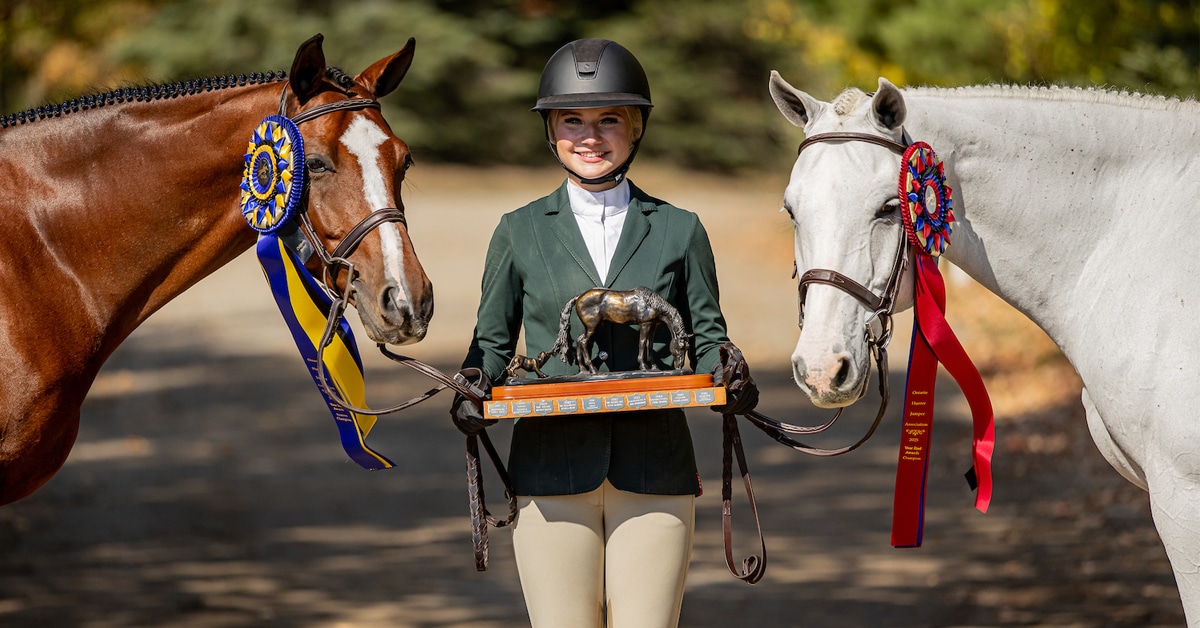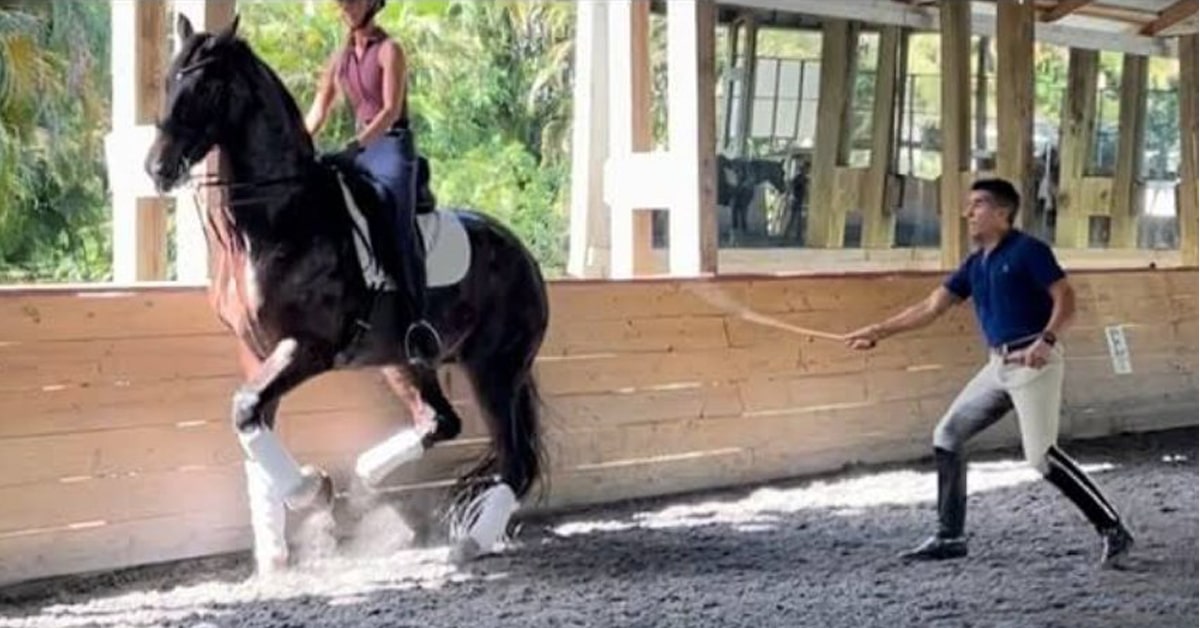Cesar Parra, the US-based Olympic dressage rider once celebrated for representing the United States at the 2004 Athens Games, has been banned for 15 years from the sport’s governing body after the FEI Tribunal found him guilty of repeated, deliberate, and systematic horse abuse.
The final decision, issued August 6, 2025, follows an extraordinary 18 months of investigations, hearings, and legal wrangling. The evidence — 29 videos, 25 photographs, and four live witness testimonies — depicted what the FEI called “a methodical, repetitive and continuous abuse of most of the horses the Respondent owned and trained, in complete disregard of the well-being and welfare of the horses.”
The allegations ranged from blunt-force violence to sophisticated mechanical devices designed to cause pain.
In its sanction request, the FEI urged the Tribunal to impose a lifetime suspension, arguing that only permanent exclusion could adequately protect horse welfare, deter others, and preserve the sport’s integrity. The FEI has never before sought a lifetime ban in a horse abuse case, underscoring the exceptional seriousness with which it viewed the allegations. However, after weighing the principle of proportionality, the evidence, and relevant case law, the Tribunal decided on a 15-year suspension for violating Article 142.1 of the General Regulations, with credit given for the provisional suspension served since February 2, 2024.
The Allegations
Parra was provisionally suspended in February 2024 after the FEI and the US Equestrian Federation received multiple complaints. The allegations ranged from blunt-force violence to sophisticated mechanical devices designed to cause pain.
The FEI’s Claim Brief alleged “excessive use of whip and spurs resulting in whip and spur marks, welts and open wounds,” aggressive hand aids causing bleeding mouths, and devices such as twisted steel wire headsets, metal nuts under nosebands, electric spurs, leather shackles with rubber bands, pulley systems, and metal rings braided into horses’ tails. Other practices included tying horses’ heads down for hours, forcing hyperflexion, riding lame or injured animals, overworking them in extreme heat, and depriving them of food, water, and recovery.
According to the FEI, “the alleged incidents were repetitive, deliberate and continuous acts of horse abuse,” affecting “a large number of Horses” and showing “a perpetual search and use of new abusive techniques, gadgets and/or devices to force the Horses into submission.”
Inside the Barn: Witness Testimonies
Several of the witnesses described staying in Parra’s employment despite the abuse, motivated by a desire to protect the horses and gather proof. Witness 1 explained that he “had personal and emotional connections with the horses and first wanted to mitigate the harm caused to them, later document it before reporting the matter to the FEI.” Witness 2 said she initially remained “to help and save the horses instead of taking pictures,” but as conditions worsened, “it was difficult for her to just leave, she was trapped, and at the end she also stayed to ‘create the case’ in relation to the abuse committed by the Respondent.” Their testimony suggests a calculated decision to work within a hostile and abusive environment to collect the evidence that would ultimately form the backbone of the FEI’s case.
FEI Witness 1: “Submissive and humble”
A dressage rider registered with USEF and the FEI, Witness 1 worked for Parra between November 2022 and September 2023. He said he saw:
- “Excessive use of whip and spurs resulting in whip marks, welts and open wounds on the horses’ flanks.”
- A “twisted wire headset placed on the horse’s head under the bridle and tied down to the girth… to force the horse’s head down,” causing “pain and cuts on the horse’s head, on the horses Dakhir, Mollegardens Fashion, Don Cesar Junior and Fanta 4.”
- Metal nuts under nosebands “to create pain and inflammation… often result[ing] in swelling on the nasal bones.”
- A pulley system and leather shackles used “for the forced resistance of the legs and body.”
- A metal ring braided into the tailbone to apply tension on the tail and tail bone to make the horse “tilt his pelvic and ‘sit’ more.”
He described Parra’s philosophy bluntly: “By taking the horses’ legs away from them, he would make them submissive and humble.”
Horses, he said, “were in a mental state of distress… Sometimes, they would refuse to move, lean down or spin around.” Overwork was routine: “twice per day, six days per week even in the summer heat in Florida… with an enormous amount of humidity.”
FEI Witness 2: “The sound of the whipping became almost normal”
A rider and social media manager from July 2023 to January 2024, Witness 2 alleged:
- Daily whipping “to the extent that the sound of the whipping became almost normal.”
- Spur wounds left raw and open; horses would not be given time to rest and heal but instead would continue riding them.
- Tying down horses’ heads for hours — in one case, the horse Dakhir tied to a tree for “8.5 hours, to ‘work through his thoughts.’”
- Overwork in extreme heat, including riding after shows “because the performance at the test was not good enough” despite exhaustion.
- Modifications to whips — “black zip ties… with electrical tape resulting in the whips having a sharp ending and being more severe.”
She also recalled horses’ fear: “Their eyes became huge with fear when the Respondent would approach them.”
FEI Witness 3: “Learned helplessness”
A professional rider and coach for 20 years, Witness 3 said she saw Parra at major competitions in 2022 and 2023. At the 2022 New Jersey horse show (a qualifier for the 2023 U.S. Dressage Festival of Champions), she reported to officials that “the Respondent was extremely violent with his horses in the warm up arena, ripping the horse’s mouth and sawing the bit. The horse was dripping in sweat and had whip marks on it.”
At the 2023 Festival of Champions, she again saw overwork and the riding of unsound horses in extreme heat. The Tribunal report notes that she testified that “she had reported the matter during the events and shows, but that the technical delegates would either ignore it, or indicate that the Respondent probably knows what he is doing since he is a professional.”
When questioned by Parra’s counsel, she explained why she thought nothing was done: “They would not want to go against the Respondent, because they were concerned for their job and their reputation would be damaged, if they were to go against a ‘big name’.” She also noted that although there was an official one-hour limit on warm-up riding, enforcement “would depend on whether the technical delegates would pay enough attention to the timing, which was not the case there.”
“The technical delegates would either ignore [the reports], or indicate that the Respondent probably knows what he is doing since he is a professional.”
This testimony painted a picture not only of alleged abuse, but also of in-competition oversight failing to act — whether due to intimidation, complacency, or reluctance to challenge a high-profile competitor.
FEI Witness 4: “More than ten occasions”
A German rider who worked for Parra in 2017, Witness 4 described:
- “Excessive use of whip and spurs resulting in bloody and swollen whip marks and bloody spur marks on a regular basis.”
- Electric spurs “on more than ten occasions… before shows to make the horses more sensitive to his leg aids,” with a “remote control in the Respondent’s hand.”
- Hyperflexion “to the point where they were sometimes touching their chest.”
- Working horses “three to four times per day… six days a week,” including when “injured, or bleeding.”
She added that “everyone else who worked at the Respondent’s barn during her time observed the use of electric spurs.”
Expert Analysis
Dr. Rachel Murray, a Grand Prix rider and veterinary surgeon with over 160 scientific publications, assessed the visual and testimonial evidence. The FEI noted her expertise in identifying pain indicators — “wrinkles above the eye… widened eyes, ears pinned back, hollow back, and/or tail swishing” — as crucial in interpreting the horses’ condition. The decision doesn’t reproduce her full 53-page findings, but it’s clear the Tribunal gave weight to her combined veterinary and dressage expertise in assessing whether the visual evidence showed signs consistent with abuse.
Pattern, Philosophy, and Aggravating Factors
The Tribunal found that the abuse was “the essential and indispensable part of the Respondent’s training technique.” Aggravating factors included instructing others to commit abuse, exploiting power imbalances, and forbidding questions about his methods.
The FEI argued the damage extended beyond the barn: “Any conduct that compromises the welfare of the horse… negatively impacts on the equestrian sport and its governing body.”
The case was widely reported and shared on social media, generating public outrage and tarnishing dressage’s image.
The Sanctions
The Tribunal imposed:
- 15 year suspension from all FEI and national federation events and activities, in any capacity, including as a spectator.
- CHF 25,000 fine (~USD 28,000).
- CHF 10,000 toward legal costs.
The ban is retroactive to February 2024, when Parra’s provisional suspension began.
The decision stands as one of the most severe in FEI history, underscoring that repeated, deliberate abuse at the sport’s highest levels will be met with the harshest sanctions. As the Tribunal put it, the evidence showed “grave and extensive abuse… continuously and repetitively throughout several years… in complete disregard of the well-being and welfare of the horses.”
The Latest
